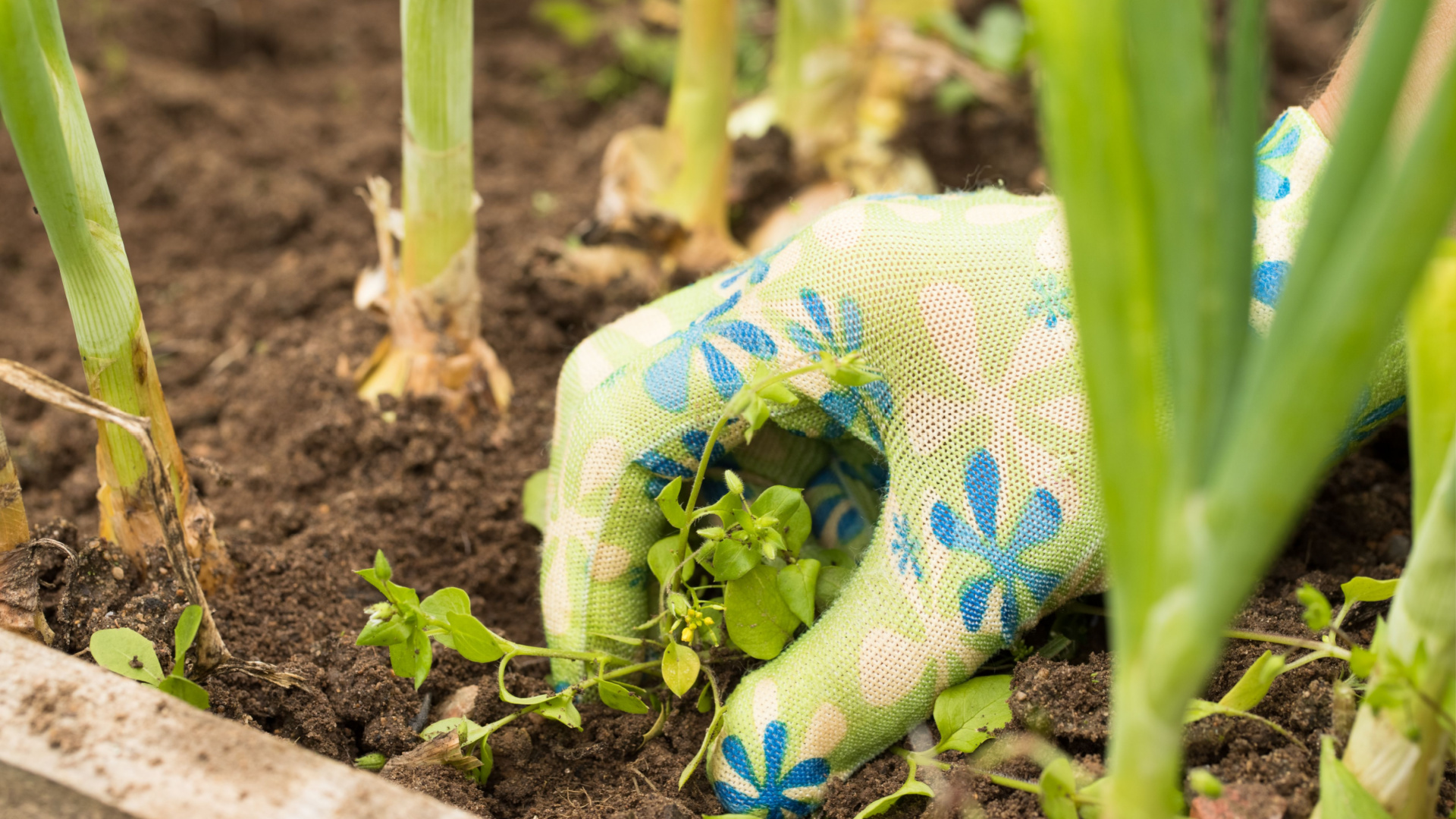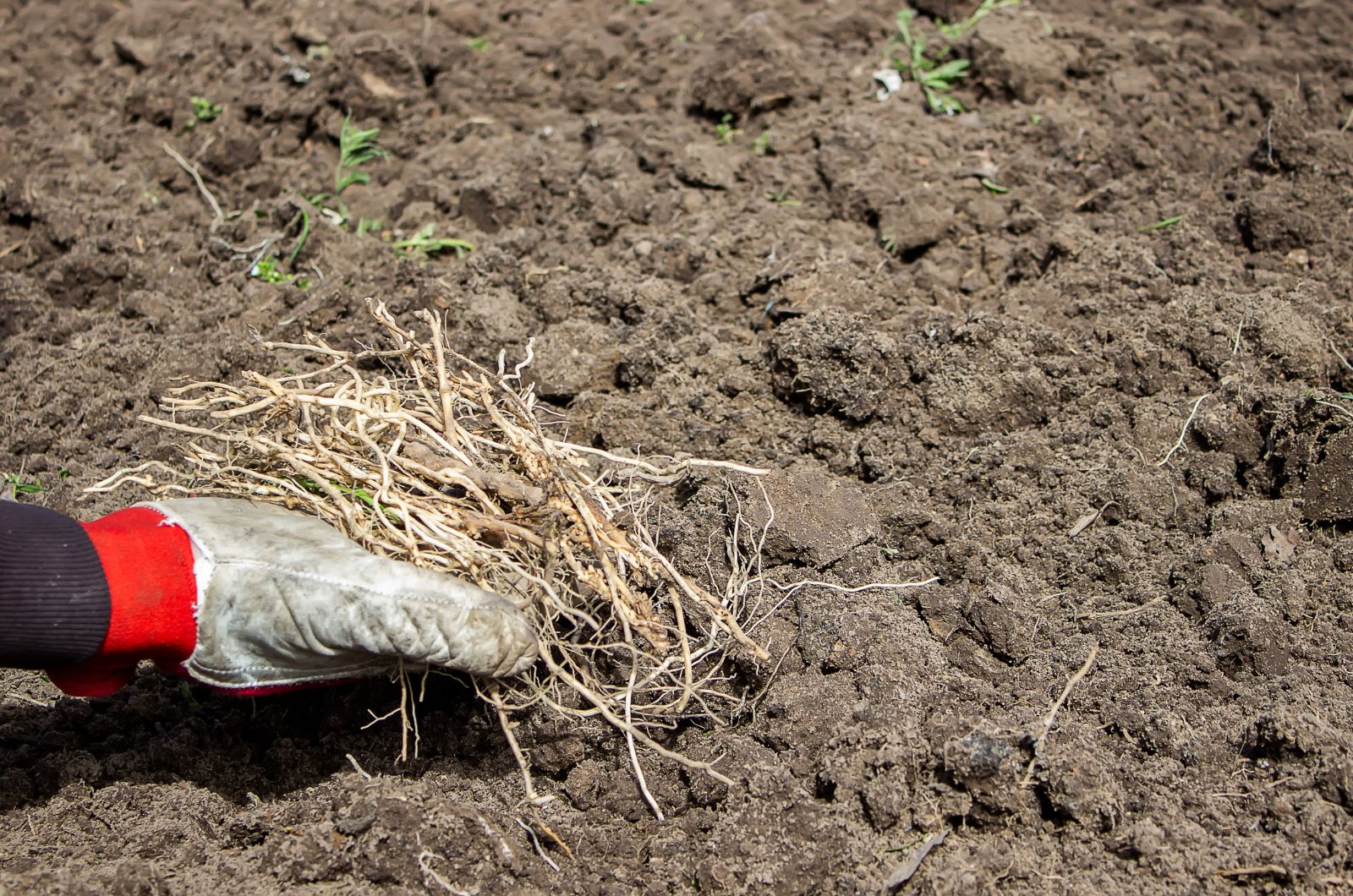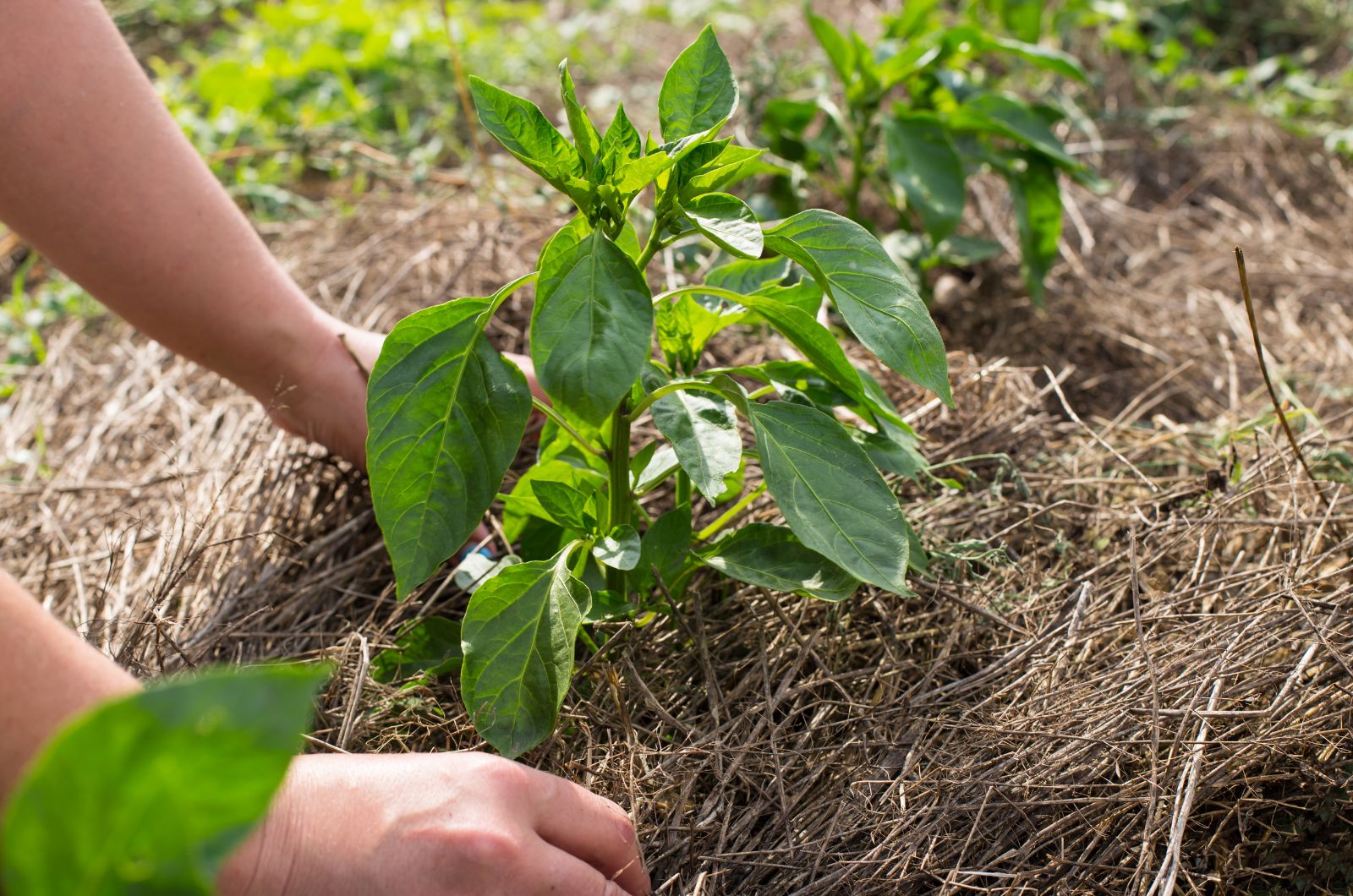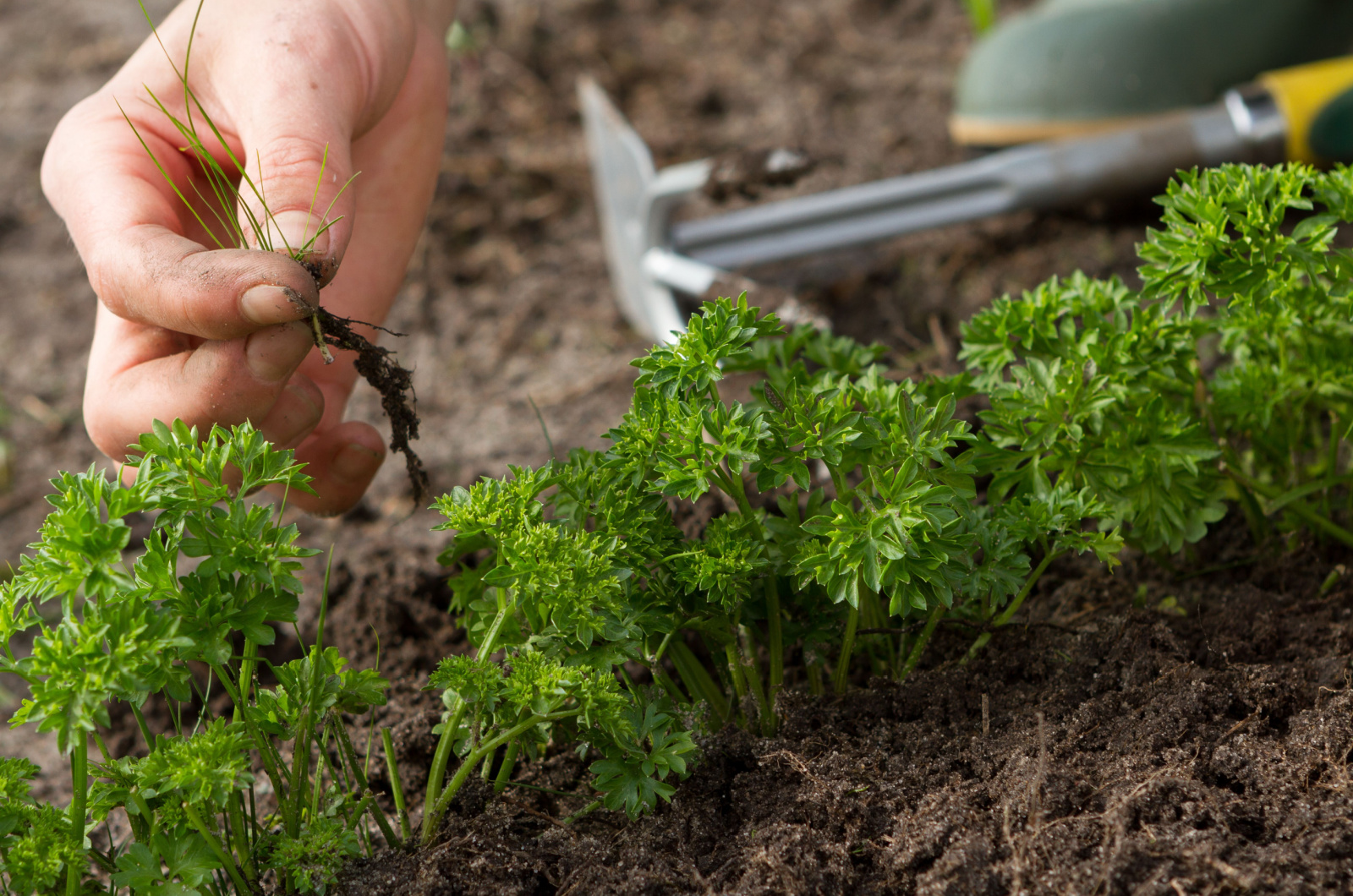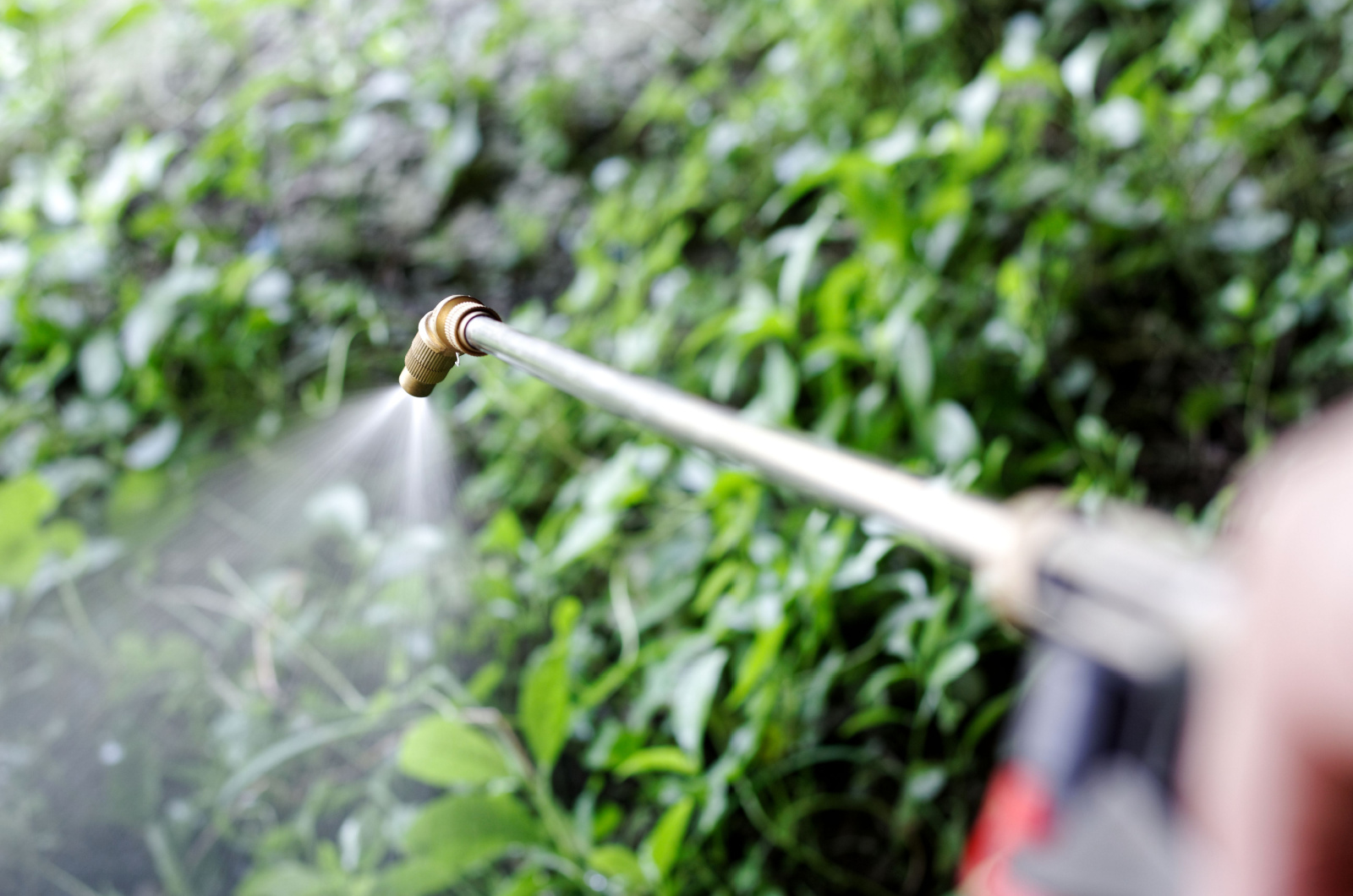I cannot name a single gardener who has ever said: “I’m fine with weeds growing in my vegetable patch.” These plants are a plain nuisance, and the sooner you get rid of them, the better.
But how exactly can you do that? They can pose a big issue once they spread. They’ll take up valuable space, nutrients, moisture, and light from your other plants.
Not to mention how difficult they become to remove once they’re large enough!
Here are some tips that will help you cut weeds at their roots!
Let’s get started!
#1 Start Weeding Early On
The best way to deal with weeds is before you even sow or plant anything in your vegetable patch. Make sure to till your soil (at least its surface) and get rid of all the root fragments you can see. You can use a garden sieve if there’s too many of them.
Afterwards, you can apply organic herbicides suitable for use in and around vegetable gardens. Leave your plot to itself for 2-3 weeks after tilling and sieving all the weeds.
Apply fatty acid herbicide to the weeds. These are quite safe and won’t contaminate the soil or harm plants other than those they directly touch. (1)
If you prefer no-till gardening, you can find an opaque landscaping fabric and cover your entire plot with it. Do this in fall so that all the weeds and their seeds die before you start planting.
#2 Mulch, Mulch, Mulch
If you want to reduce the amount of weeding you have to do around your garden, don’t forget about mulching. A 2-3-inch thick layer is all you need to choke out these plants and prevent them from emerging in the first place.
The best mulch for a vegetable garden includes grass clippings, coconut husk, and straw. Although, you can use pretty much anything from compost and wood mulches to rubber or plastic.
To make your life a lot easier, mulch only larger seedlings and established plants. Sowing and transplanting young vegetables is much harder with mulch in the way.
#3 Check Up On Your Plot Often
Young weeds are a breeze to get rid of, unlike old and established ones. That’s why it’s crucial to check up on your vegetable garden often and pull every unwanted plant you see.
The thing is, young weeds and newly sprouted vegetables may look alike. To avoid mistaking the two and accidentally uprooting your plants, mark and label the places where you’ve planted your veggies.
You can also use organic herbicides with fatty acids in them that are generally safe to use in your vegetable patch. But be careful! Only apply them to weeds because they will kill your vegetables too if they get the chance.
#4 If The Weeds Get Out Of Control, Then…
Weeds can spread rather quickly. Neglect weeding for 2-3 weeks, and you’ll see they’re suddenly everywhere.
At this point, pulling them out may be tiresome. And if some weeds have developed deep roots during that time, uprooting them may disturb your vegetables.
One option is to trim the weeds down to their base and cover them with an opaque fabric. This will prevent them from photosynthesizing and starve them out.
You can also apply some herbicide approved to use around vegetables if you’d like. Or you can make your own weed killer if you prefer a more organic variant.
Regular weeding will keep your vegetables healthy and flourishing. They won’t have to compete for space, water, light, and nutrients to survive. They’ll have all that and more with the weeds gone!
References:
1. Fatty Acid Organic Herbicide. (n.d.). UCANR Strawberry Disorders: Identification & Management.

